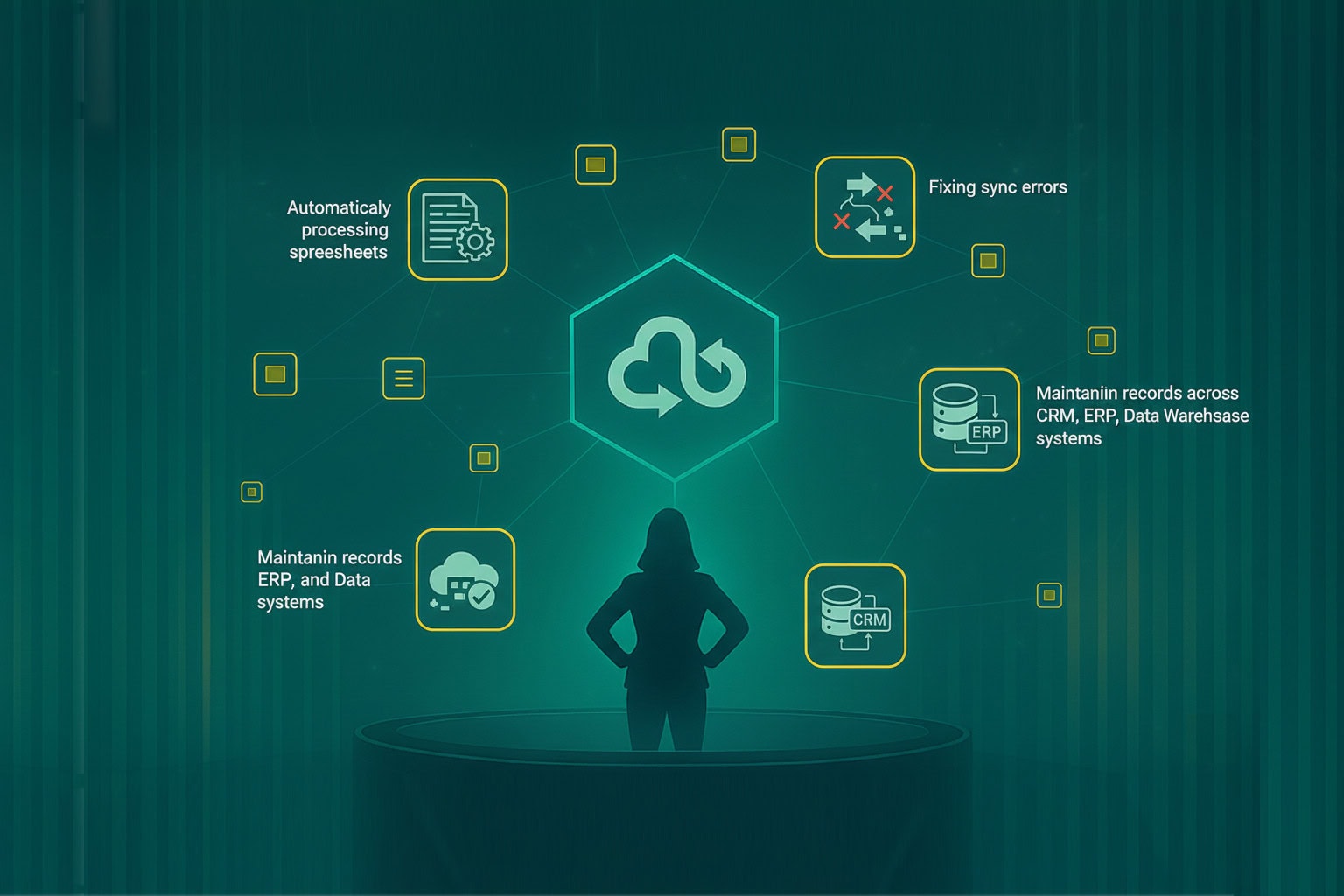Enterprises are at the edge of a productivity revolution—not powered by another SaaS tool or dashboard, but by a new generation of intelligent software: AI agents.
From automated forecasting to self-healing systems and customer service copilots, AI agents are moving beyond chatbots and predictive analytics. They’re becoming goal-driven, autonomous actors capable of making decisions, collaborating across systems, and taking action—without human intervention at every step.
In this blog, we’ll explore what AI agents are, how they differ from traditional automation, and why they’re central to the future of enterprise productivity.
What Are AI Agents?
At their core, AI agents are autonomous software entities that pursue specific goals on behalf of users or organizations. Unlike traditional bots or workflows, agents don’t just follow rules—they sense, reason, plan, and act based on evolving context.
They combine multiple AI capabilities such as:
- Natural language understanding (NLU) for communication
- Machine learning for pattern recognition and adaptation
- Planning algorithms to sequence complex tasks
- Tool use and orchestration to interact with systems and APIs
- Memory and context to learn from history and maintain continuity
This enables AI agents to go far beyond simple task automation. They can coordinate with other agents, evaluate tradeoffs, make real-time decisions, and even flag exceptions when human input is needed.
AI Agents vs. Traditional Automation: What’s the Difference?
While RPA (Robotic Process Automation) and workflows automate repetitive tasks, AI agents operate on an entirely different level of intelligence and autonomy.
| Feature | Traditional Automation | AI Agents |
| Task Complexity | Simple, rules-based | Complex, dynamic |
| Adaptability | Low | High |
| Decision-Making | Predefined logic | Autonomous reasoning |
| Collaboration | Siloed | Multi-agent coordination |
| Use Cases | Back-office tasks | Enterprise-wide productivity |
This makes AI agents ideal for modern business environments where speed, personalization, and contextual intelligence are essential.
5 Ways AI Agents Are Transforming Enterprise Productivity
1. Autonomous Workflow Execution
AI agents can manage end-to-end workflows—like onboarding a new employee, reconciling finance data, or triaging support tickets—without human intervention. They evaluate outcomes, adjust tactics, and trigger next steps in real time.
2. Real-Time Data Activation
With trusted, governed data as their foundation, AI agents pull insights from CRMs, ERPs, data warehouses, and external APIs to deliver timely decisions. This is especially impactful when paired with agentic MDM systems that ensure data consistency across sources.
3. 24/7 Decision Support
Whether it’s sales forecasting, inventory rebalancing, or security monitoring, AI agents work continuously—surfacing insights and executing actions even while teams sleep. This persistent execution drives significant productivity gains and cost savings.
4. Cross-Functional Collaboration
Unlike task-specific bots, AI agents can collaborate across business units. For example, a customer success agent might coordinate with a billing agent to resolve disputes proactively—reducing churn and improving CX without escalating to humans.
5. Scalable Intelligence
One of the biggest advantages of AI agents is their scalability. As enterprise data and complexity grow, agents can be deployed, duplicated, or specialized to address new needs—without adding headcount.
Why AI-Ready Data Is the Foundation
Here’s the catch: AI agents are only as smart as the data they consume. That’s why data unification, governance, and real-time synchronization are mission-critical.
Platforms like Syncari’s Agentic MDM™ are purpose-built to support AI agents with high-quality, AI-ready data. They ensure agents have:
- Clean, deduplicated, and enriched data across all systems
- Real-time observability and lineage tracking
- Governed access to sensitive attributes and PII
- Reliable synchronization across CRM, ERP, and other apps
In short, without trustworthy data, AI agents can’t operate effectively—leading to bad decisions, broken processes, and lost productivity.
The Path Ahead: Multi-Agent Enterprises
According to Gartner, by 2026, enterprises will operate in multi-agent ecosystems, where digital agents manage increasingly complex business functions—from procurement and finance to HR and customer success.
As this vision becomes reality, CIOs and data leaders must prepare by:
- Investing in agentic architectures that support AI-agent collaboration
- Modernizing MDM and data infrastructure to ensure agents act on trusted data
- Prioritizing governance and observability to prevent risk and drift
- Building hybrid teams of humans and AI agents to drive exponential productivity
The organizations that lead this shift won’t just automate—they’ll transform how work gets done entirely.
Final Thoughts
AI agents represent a new paradigm in enterprise productivity—one where software doesn’t just support human decision-making, but augments and extends it autonomously.
To unlock this future, businesses must rethink their data foundation, embrace intelligent orchestration, and shift from manual workflows to goal-driven automation.
The result? Faster decisions, lower costs, and teams empowered to focus on the high-impact work only humans can do.
📥 Ready to build a data foundation for AI agents?
Download the Gartner Market Guide for Master Data Management to see why trusted, AI-ready data is the key to unlocking autonomous enterprise productivity.
👉Complimentary Access to the Research→
Gartner does not endorse any vendor, product or service depicted in its research publications, and does not advise technology users to select only those vendors with the highest ratings or other designation. Gartner research publications consist of the opinions of Gartner’s research organization and should not be construed as statements of fact. Gartner disclaims all warranties, expressed or implied, with respect to this research, including any warranties of merchantability or fitness for a particular purpose.


